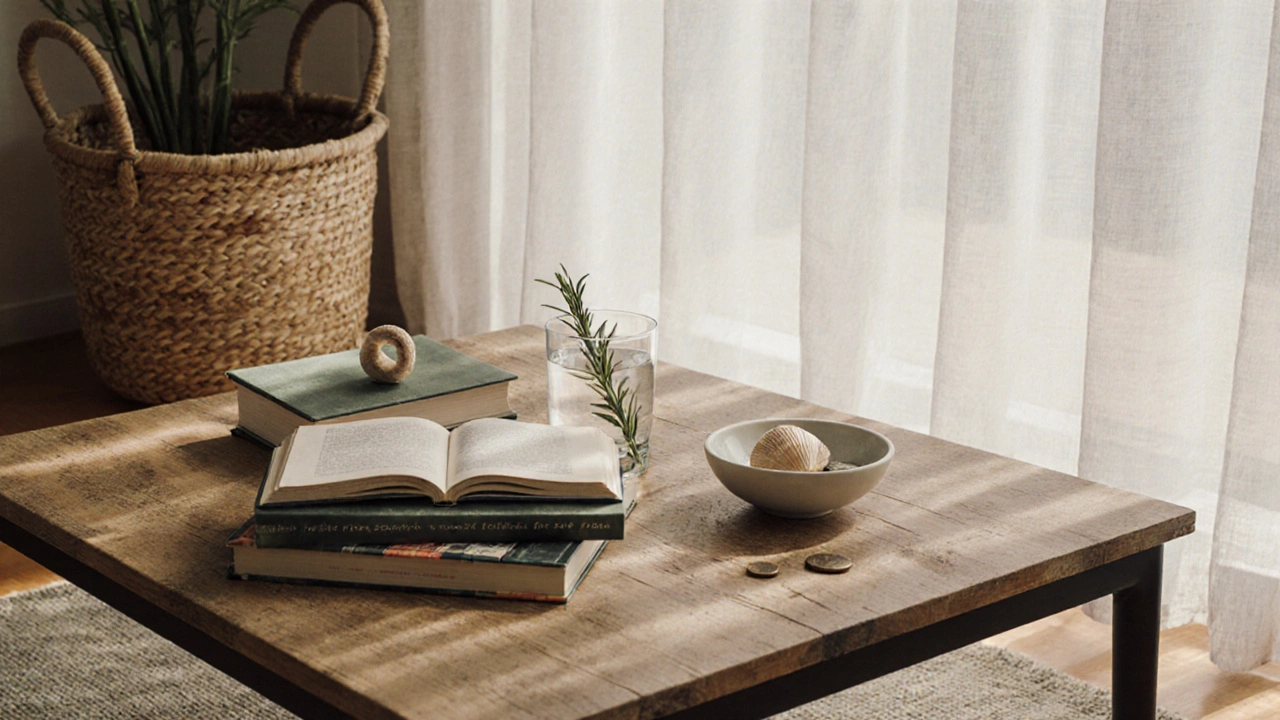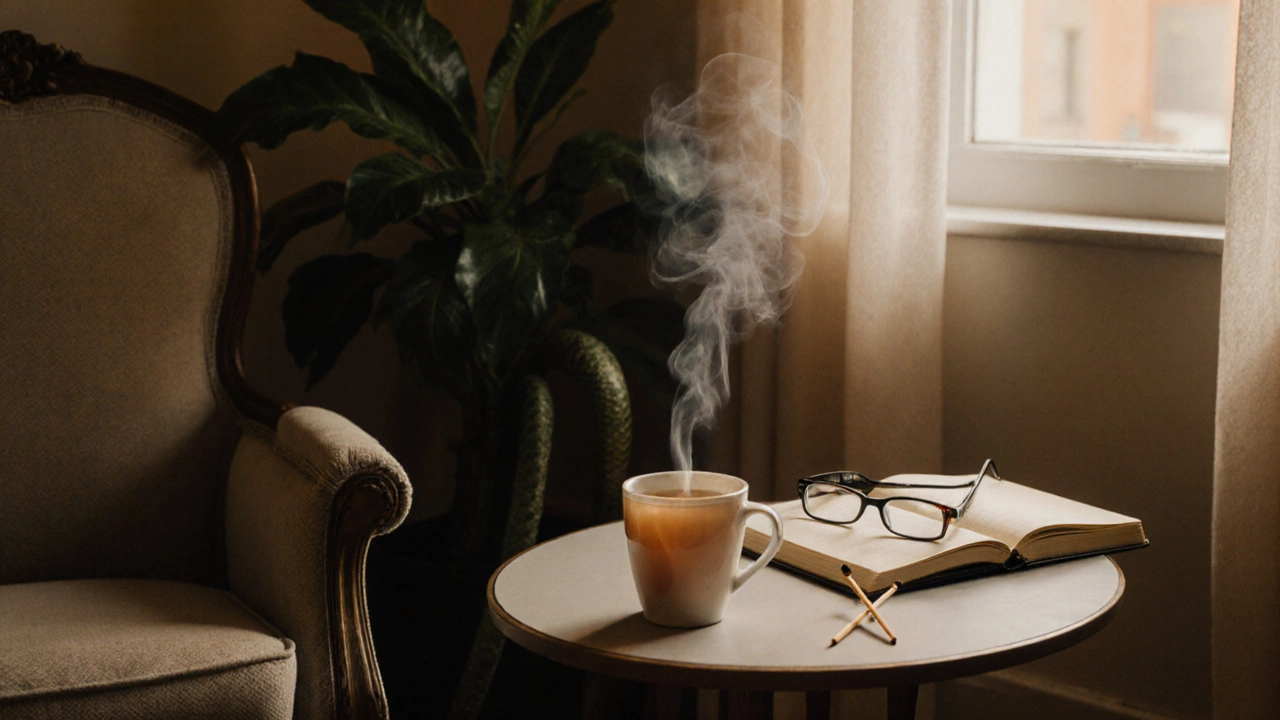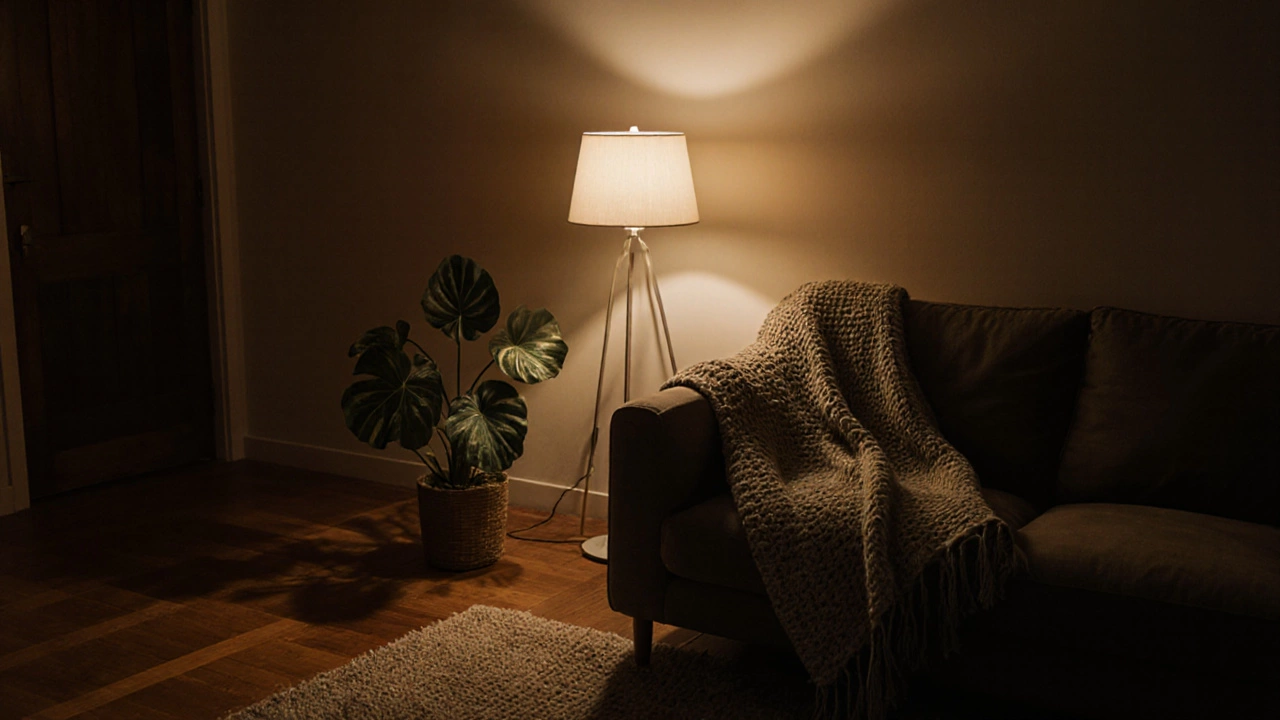Room Liveliness Score Calculator
How life-filled is your room?
Answer these 5 questions to get your personalized liveliness score. Based on the article's principles: lighting, texture, color contrast, arrangement, and sensory elements.
Your Liveliness Score
Tip: Try adding one plant or a textured throw for instant warmth.
Ever walk into a room and feel nothing? No warmth, no energy, just... empty space? You’re not alone. A dull room isn’t always about bad furniture or outdated paint. Sometimes it’s just missing the little things that make a space feel alive. The good news? You don’t need a full renovation. You don’t need to spend thousands. You just need to know where to look.
Start with light - not just bulbs
Lighting is the silent MVP of any room. Most people think if they’ve got a ceiling light, they’re covered. But flat, overhead light flattens everything. It kills depth. It makes colors look gray. It turns a cozy corner into a waiting room.Try this: Add a floor lamp near your sofa. Not a tall, industrial one. Something with a soft fabric shade - warm white LED, 2700K. Place it behind your chair, angled slightly toward the floor. Now look at how the light pools on the rug. Suddenly, the space feels layered. Inviting.
Layering light means mixing three types: ambient (ceiling), task (reading lamp), and accent (spotlight on art or plants). If you’ve got a bookshelf, put a small LED strip along the bottom edge. It doesn’t need to be bright. Just enough to glow like embers. That’s the secret - subtle light makes people pause. It makes them feel safe. It makes them want to stay.
Bring in texture - not just more stuff
A dull room often has too many smooth surfaces. Glossy coffee tables, shiny metal frames, glass vases. Everything reflects the same cold light. No contrast. No rhythm.Texture is what your hands want to touch. It’s what your eyes want to linger on. Start with the rug. If yours is thin and synthetic, swap it for a wool or jute rug with a low pile. It’s not just softer - it absorbs sound, makes the room feel quieter, calmer.
Add a chunky knit throw over the back of your sofa. Not a fancy one. Just an old, slightly frayed one you found at a thrift store. Drape it casually. Let it look lived-in. Now add a woven basket for blankets. Or a ceramic vase with rough, uneven glaze. These aren’t decor items. They’re anchors. They ground the space.
Try this trick: Run your fingers over every surface in the room. If everything feels the same, you’ve got a problem. Add at least three different textures within arm’s reach. Wood, fabric, stone, metal, clay. Mix them. Don’t match them.
Color isn’t about paint - it’s about contrast
People think they need to repaint to fix a dull room. They buy a new shade of beige and call it a day. But color doesn’t live on walls. It lives in contrast.Look at your sofa. What color is it? Now look at your curtains. Are they the same tone? That’s the problem. If everything is one color family, the room feels flat. Even if it’s a nice color.
Here’s what works: Pick one dominant color (your sofa, your walls), then add one bold accent. Not neon. Something deep. A burnt sienna pillow. A navy blue lamp. A mustard yellow rug corner. That single pop creates tension - the kind that makes your eyes move around the room. It gives the space a heartbeat.
And don’t forget green. Real plants. Not fake ones. A fiddle leaf fig in the corner. A snake plant on the side table. Even a single pothos trailing from a shelf. Plants don’t just add color. They add movement. They breathe. They change with the light. That’s life.

Arrange things like a story, not a showroom
A dull room often looks like a catalog photo. Everything perfectly centered. Everything matching. Nothing out of place. That’s not a home. That’s a showroom.Real rooms have rhythm. They have imbalance. They have stories.
Take your coffee table. Instead of a perfect tray with three identical candles, put down a stack of three books - one open, one with a bookmark, one with a coffee ring. Add a small bowl of loose change. A single key. A seashell you picked up on vacation. It doesn’t need to be pretty. It just needs to be real.
Hang art asymmetrically. One large piece on the left wall. A cluster of three small ones on the right. Don’t center them. Let them breathe. Leave space. A wall with one well-placed object feels more powerful than five crowded together.
And don’t forget the floor. Put a small side table next to your favorite chair. Not because you need it. But because you want to. Put a cup of tea there. A notebook. A pair of glasses. That’s not clutter. That’s evidence of life.
Sound and smell - the invisible decor
You don’t see them. But they shape how you feel in a room.Is it silent? Or is it buzzing? A fridge hum. A fan whirring. A TV on mute. These sounds don’t vanish. They drain energy. Try turning off everything that doesn’t need to be on. Then play one song. Just one. Something warm. Jazz. Acoustic folk. Let it loop quietly in the background. Now notice how the room feels different.
Smell matters too. Not candles with fake vanilla. Real scents. A bowl of citrus peels on the counter. A sprig of rosemary in a glass of water. A few drops of eucalyptus oil on a cotton ball tucked behind a cabinet. These aren’t air fresheners. They’re memories. They’re moments.
Try this: Light a match. Let it burn for five seconds. Blow it out. The smell of wood smoke lingers for a minute. That’s the kind of scent that sticks. Not overpowering. Just enough to make you pause. To make you notice.

What to avoid - the quiet killers
Some things don’t scream dull. They just slowly drain the life out.Plastic storage bins under the coffee table. They look neat. But they’re visual noise. Swap them for woven baskets with lids. They hide clutter and add texture.
Matching sets of furniture. Everything from the same collection. It looks like a package deal. Real homes are built over time. Mix eras. A 1970s armchair next to a modern side table. A vintage mirror above a minimalist console. That’s character.
Blank walls. No art, no photos, no shelves. Walls need to breathe too. Even one small painting. A child’s drawing. A postcard. It tells a story. It says someone lives here.
And never underestimate the power of a single window treatment. Sheer curtains that move with the breeze. That’s motion. That’s life.
Quick checklist: 5 things to do today
- Turn off the main light. Light one lamp instead.
- Place a plant - any plant - where you sit most.
- Swap one smooth surface (glass, metal) for something textured (wood, wool, clay).
- Put one personal item on your coffee table - something real, not decorative.
- Open a window for ten minutes. Let the outside air in.
That’s it. No new furniture. No paint. No budget. Just five small shifts. And in 24 hours, you’ll notice something’s different. The room doesn’t feel empty anymore. It feels lived in. And that’s what life looks like.
Can I add life to a dull room without spending money?
Absolutely. Start by rearranging what you already have. Move a lamp from the bedroom to the living room. Hang a photo you printed at home. Open the curtains wider. Let natural light in. Bring in a plant from outside. Even a single candle lit at dusk can change the mood. Life doesn’t come from price tags - it comes from attention.
What’s the fastest way to make a room feel less empty?
Add a rug. Not just any rug - one that’s large enough to fit under the front legs of your sofa and chairs. It defines the space. It grounds it. Then place a single plant on the floor next to it. That’s it. Two items. Instantly, the room stops feeling like a void and starts feeling like a place.
Should I paint the walls to fix a dull room?
Only if the color is truly wrong - like a faded yellow that looks dirty or a cold gray that makes the room feel like a hospital. But most dull rooms aren’t dull because of wall color. They’re dull because they lack contrast, texture, and life. Try adding color through pillows, art, or a rug first. Paint is expensive and permanent. Small changes are cheaper and more flexible.
Why does my room still feel dull even after I decorated it?
Because you decorated for looks, not for feeling. A room full of pretty things can still feel cold if there’s no personal history in it. Did you collect those items? Do they mean something? Or are they just bought because they looked good in a magazine? Real life lives in the imperfect - a chipped mug, a faded blanket, a book with notes in the margins. Those are the things that make a room breathe.
How long does it take to notice a difference after making changes?
Sometimes, it’s instant. Walk into the room after turning off the overhead light and lighting a single lamp - you’ll feel it. Other changes, like adding a plant or opening windows, take a few days to settle. But the real shift happens when you stop seeing the room as a project and start seeing it as a home. That’s when the dullness fades - not because of what you added, but because you finally stopped trying to fix it and started living in it.
Don’t wait for the perfect moment. Don’t wait for the perfect budget. Start with one lamp. One plant. One object that means something to you. That’s where life begins.


